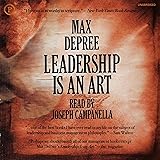The decision to invest in 18k and 22k gold jewelry often presents a compelling dilemma for enthusiasts and discerning buyers alike. As highlighted in the accompanying video, the choice between these karatages isn’t just about aesthetics; it’s a strategic consideration blending personal enjoyment with the practicalities of wealth preservation. Many view gold jewelry as a tangible asset, a wearable investment that offers both intrinsic value and a touch of elegance. However, understanding the nuanced differences and their implications for long-term value retention requires a deeper dive into the world of precious metals.
When you contemplate acquiring gold, whether for adornment or as a hedge against economic volatility, discerning the various forms of gold is crucial. Pure investment gold, often referred to as bullion or coins, typically stands at 24 karats, signifying 99.9% purity. This form is favored by traditional investors because its value directly tracks the global spot price of gold with minimal manufacturing premiums. However, jewelry presents a unique proposition: it serves a dual purpose, offering both aesthetic pleasure and a potential store of value. The real question then becomes, how do 18k and 22k gold jewelry stack up in this unique investment landscape?
Decoding Karatage: Purity, Durability, and Color in Gold Jewelry
Karatage serves as the universal standard for measuring the purity of gold. A single karat represents 1/24th part of pure gold by mass, meaning 24k gold is considered 100% pure (or 99.9% in practical terms). This system is essential for understanding the composition and characteristics of any gold piece. For instance, jewelry rarely consists of pure 24k gold, primarily because unalloyed gold is exceptionally soft and highly susceptible to scratches and deformation, making it impractical for everyday wear.
This is where alloys come into play, metals like copper, silver, zinc, or nickel are meticulously blended with pure gold. These additions serve a critical function, enhancing the gold’s durability, altering its color, and reducing its overall cost. Consider it like a master chef creating a recipe; each ingredient changes the final texture and flavor. Similarly, the specific combination and proportion of alloys fundamentally transform gold’s physical properties and visual appeal, offering a spectrum of choices from robust 14k gold to the near-pure richness of 22k.
18k Gold: The Western Standard for Enduring Elegance
18k gold jewelry contains 75% pure gold, with the remaining 25% comprised of various alloys. This specific composition strikes an excellent balance, offering significantly greater durability compared to higher karatages while still maintaining a substantial gold content. Consequently, 18k gold is less prone to scratches, dents, and wear from daily activities, making it a popular choice for engagement rings, watches, and other frequently worn items. Its robust nature is a significant advantage for those seeking longevity in their fine jewelry.
Visually, 18k gold typically exhibits a slightly lighter, brighter yellow hue compared to 22k gold. This distinct color profile is a direct result of the higher proportion of alloys, which dilute the intense yellow of pure gold. In many Western markets, 18k gold is the preferred standard for high-end jewelry, celebrated for its perfect blend of aesthetic appeal, inherent value, and practical resilience. While its intrinsic gold value per gram is lower than 22k, its superior hardness and versatility often command a premium in the luxury jewelry sector.
22k Gold: The Vibrant Heart of Wearable Wealth
Stepping up in purity, 22k gold boasts a remarkable 91.6% pure gold content, with only 8.4% composed of alloys. This higher percentage of gold makes 22k significantly softer than its 18k counterpart, though it remains considerably more durable than unadulterated 24k gold. Despite its increased malleability, 22k gold is perfectly suitable for daily wear, especially in regions where heavier, traditional designs are prevalent. The trade-off for its stunning visual characteristics is the need for slightly more mindful handling to prevent potential scratches or deformation.
The most striking characteristic of 22k gold is its deeply rich, warm, and often described as “orangey-yellow” color. This intense hue, which the video speaker also praised as “vibrant,” is a direct manifestation of its high gold content, resembling pure gold more closely than lower karatages. For many cultures, particularly across Asia, the Middle East, and India, 22k gold is not merely jewelry; it represents a tangible form of wealth, frequently purchased for both adornment and as a significant family asset. Opting for 22k gold jewelry is akin to investing in a piece of art that simultaneously holds substantial intrinsic value, offering both beauty and a robust financial anchor.
The Investment Lens: Understanding Value, Premiums, and Liquidity
Approaching gold jewelry as an investment requires a clear distinction from pure gold bullion. While both hold inherent value based on the precious metal, jewelry carries additional components that influence its overall price and resale potential. The “premium” mentioned in the video encompasses more than just the gold’s spot price; it includes the costs associated with design, manufacturing, labor, branding, and the jeweler’s markup. For instance, a beautifully crafted 18k designer piece might initially cost more than a simple 22k chain of the same weight due to these added “artistic” and “brand” premiums.
However, when considering long-term value retention and potential resale, the intrinsic gold content becomes paramount. The video rightly highlights the significant difference: 18k gold contains 75% gold, while 22k contains 91.6% gold. Even a small price difference per gram, such as the $4 CAD mentioned by the speaker (e.g., $95 for 18k vs. $99 for 22k), accumulates substantially over the weight of a typical jewelry piece. For a 20-gram chain, this modest differential translates to an $80 initial cost difference, yet the 22k piece inherently offers a much higher “melt value” due to its superior gold purity. This translates to a better potential return on investment if the primary goal is to retain the value of the underlying metal.
Beyond the Initial Purchase: Resale and Liquidity Considerations
The decision to invest in 18k and 22k gold jewelry carries implications for future liquidity. While gold bullion is highly liquid and can be easily converted to cash at or near its spot price, selling gold jewelry can be a more nuanced process. Most gold dealers, including those operating gold exchanges, will primarily assess jewelry based on its “melt value.” This calculation factors in the current spot price of gold and the item’s karatage and weight, often offering a percentage of this melt value rather than the original retail price.
Jewelry with higher karatage, such as 22k, generally commands a better return on its melt value during resale because it contains a greater proportion of pure gold. Conversely, the artistic merit, brand name, or craftsmanship of a piece, while contributing to its initial retail premium, often holds less weight with dealers focused solely on precious metal content. Therefore, if the intention is to wear an investment that offers a more favorable return on its underlying metal content when eventually sold, 22k gold often presents a more compelling proposition than 18k, especially given minimal price differences per gram at purchase.











